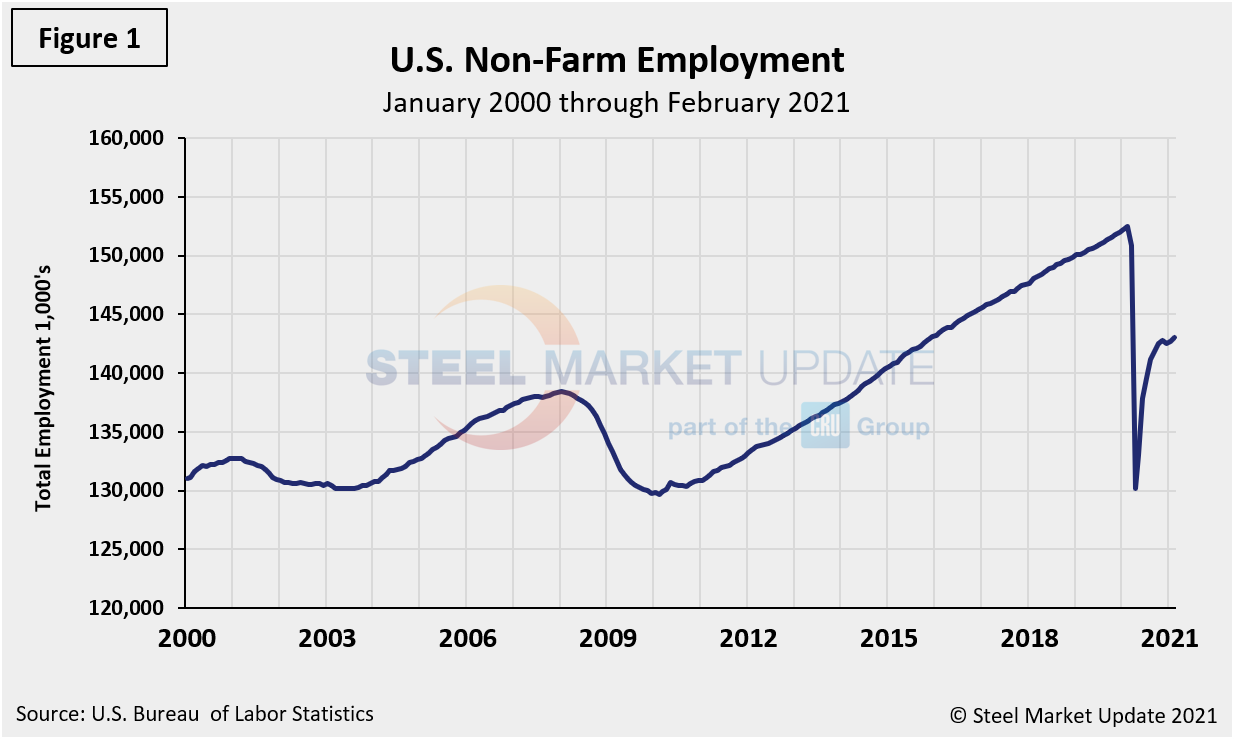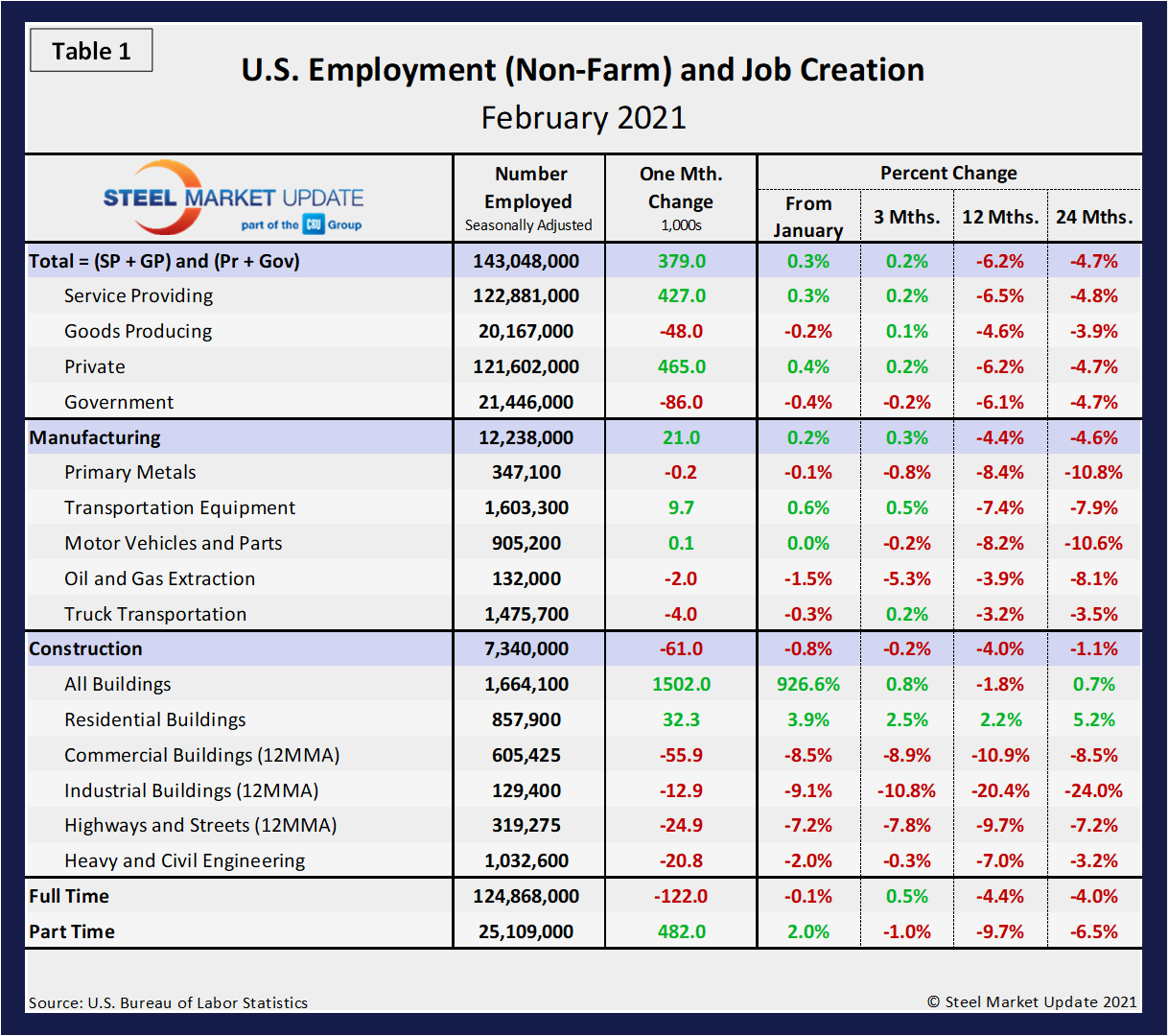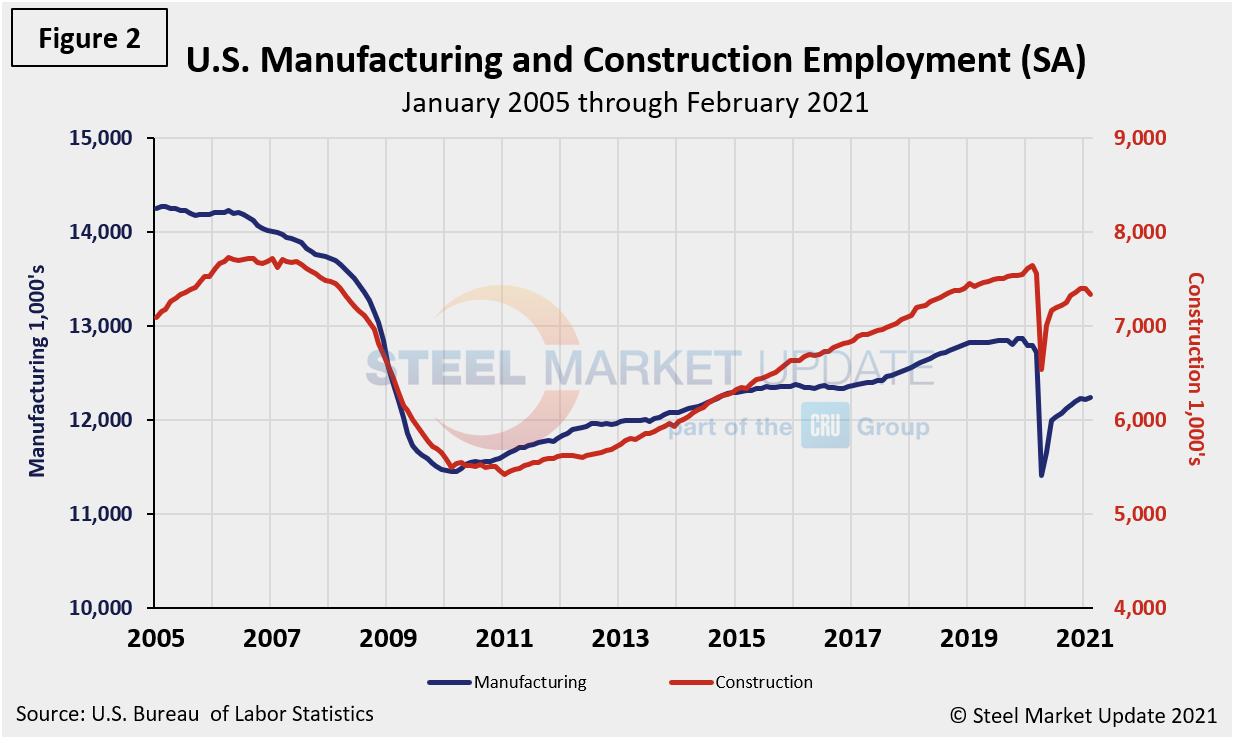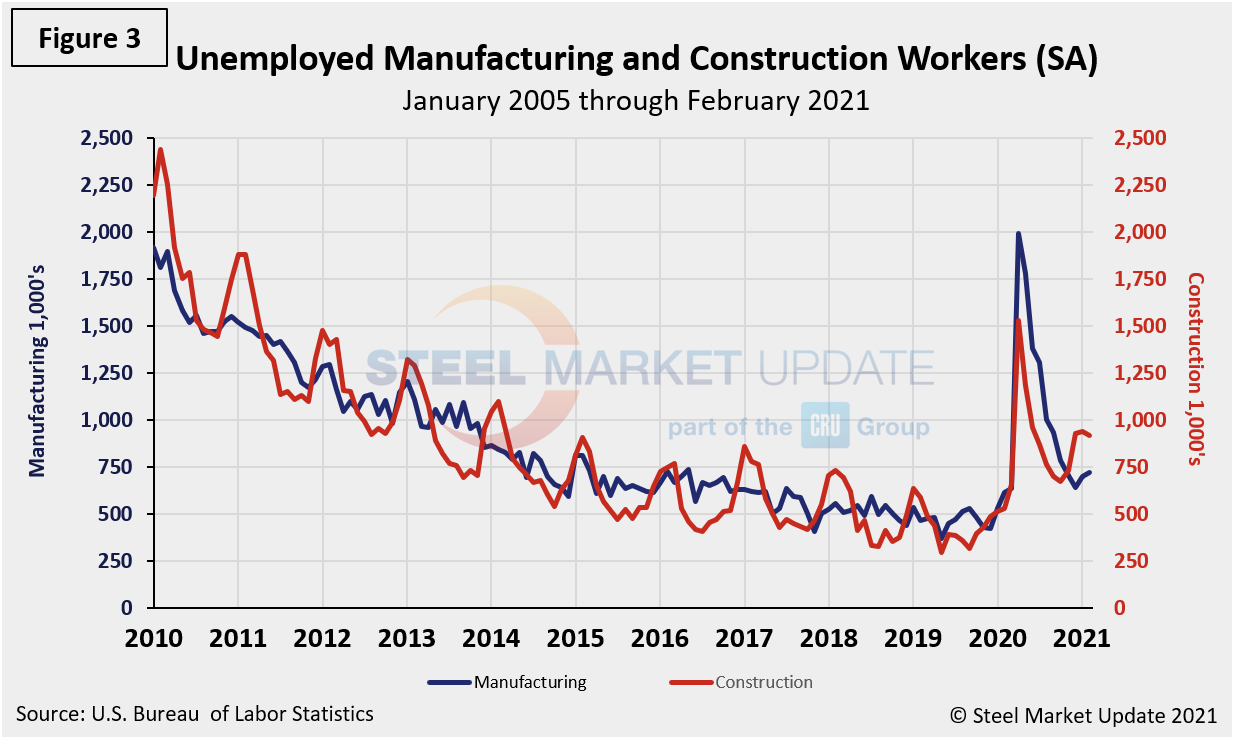Economy

Employment by Industry: Jobs Advance in February
Written by David Schollaert
March 9, 2021
After dismal reports for the U.S. labor market in December and January, February saw positive gains in employment. The U.S. Bureau of Labor Statistics (BLS) reported that employers added 379,000 to their payrolls in February, as vaccinations and business reopenings gave the economy a boost. Despite the added jobs this past month, the unemployment rate was little changed at 6.2%, compared to 6.3% the month prior, according to Steel Market Update’s latest analysis of the BLS data.
The net change in employed persons in February was a positive 379,000, a noticeable swing from the negative 447,000 in December, and negative 140,000 in January. Both the unemployment rate, at 6.2%, and the number of unemployed persons, at 10.0 million, changed little in February. Although both measures are much lower than their April 2020 highs of 14.7% when the number of unemployed persons skyrocketed to 23.1 million, they remain well above their pre-pandemic levels in February 2020 at 3.5% and 5.7 million, respectively. Due to the pandemic fallout, the baseline against which future comparisons will be made is February 2020, the all-time high for nonfarm employment at 152,463,000. Figure 1 shows the total number of people employed in the nonfarm economy.

Table 1 is designed on rolling time periods, 1 month, 3 months, 1 year and 2 years. It breaks total employment into service industries and goods-producing industries and then into private and government employees. Most of the goods-producing employees work in manufacturing and construction. Comparing service industries and goods-producing in February shows service jobs to have increased by 0.3%, while goods-producing fell by 0.2% from January’s result. Note, the subcomponents of both manufacturing and construction shown in Table 1 don’t add up to the total because we have only included those with the most relevance to the steel industry.

Comparing February to January, manufacturing employment was up by 0.2% versus a negative 0.7% the month prior. Construction was down by 0.8%, a further escalation from a negative 0.3% in January. In the year-over-year comparison, manufacturing was down 4.4% and construction 4.0%. Although the percentages remain negative, the trend has been improving and on the rise since the freefall in April.
Manufacturing employment increased by 21,000 in February, led by a gain of 10,000 in transportation equipment. Construction fell by 61,000, largely reflecting declines in non-residential specialty trade contractors and heavy and civil engineering construction, according to the BLS data. Severe winter weather across much of the country may have limited employment in construction. Employment in the industry is 308,000 below its year-ago level. Mining shed 8,000 jobs in February, with losses occurring in support activities for mining and in oil and gas extraction. Mining has lost 153,000 jobs since an employment peak in January 2019, though nearly two-thirds of the loss has occurred over the past year. Figure 2 shows the history of employment in manufacturing and construction since January 2005.

The reported number of unemployed manufacturing and construction workers is shown in Figure 3. These were 724,000 and 921,000, respectively, at the end of Februay.

Explanation: On the first or second Friday of each month, the Bureau of Labor Statistics releases the employment data for the previous month. Data is available at www.bls.gov. The BLS employment database is a reality check for other economic data streams such as manufacturing and construction. It is easy to drill down into the BLS database to obtain employment data for many subsectors of the economy. The important point about all these data streams is not necessarily the nominal numbers, but the direction in which they are headed.
By David Schollaert, David@SteelMarketUpdate.com

David Schollaert
Read more from David SchollaertLatest in Economy

Steel groups welcome passage of budget bill
Steel trade groups praised the passage of the Big Beautiful Bill (BBB) in Congress on Thursday.

Industry groups praise Senate for passing tax and budget bill
The Steel Manufacturers Association and the American Iron and Steel Institute applauded the tax provisions included in the Senate's tax and budget reconciliation bill.

Chicago PMI dips 0.1 points in June
The Chicago Purchasing Managers Index (PMI) slipped 0.1 points to 40.4 points, in June.

Multi-family pullback drives housing starts to 5-year low in May
US housing starts tumbled in May to a five-year low, according to figures recently released by the US Census Bureau.

Architecture firms still struggling, ABI data shows
Architecture firms reported a modest improvement in billings through May, yet business conditions remained soft, according to the latest Architecture Billings Index (ABI) release from the American Institute of Architects (AIA) and Deltek.
